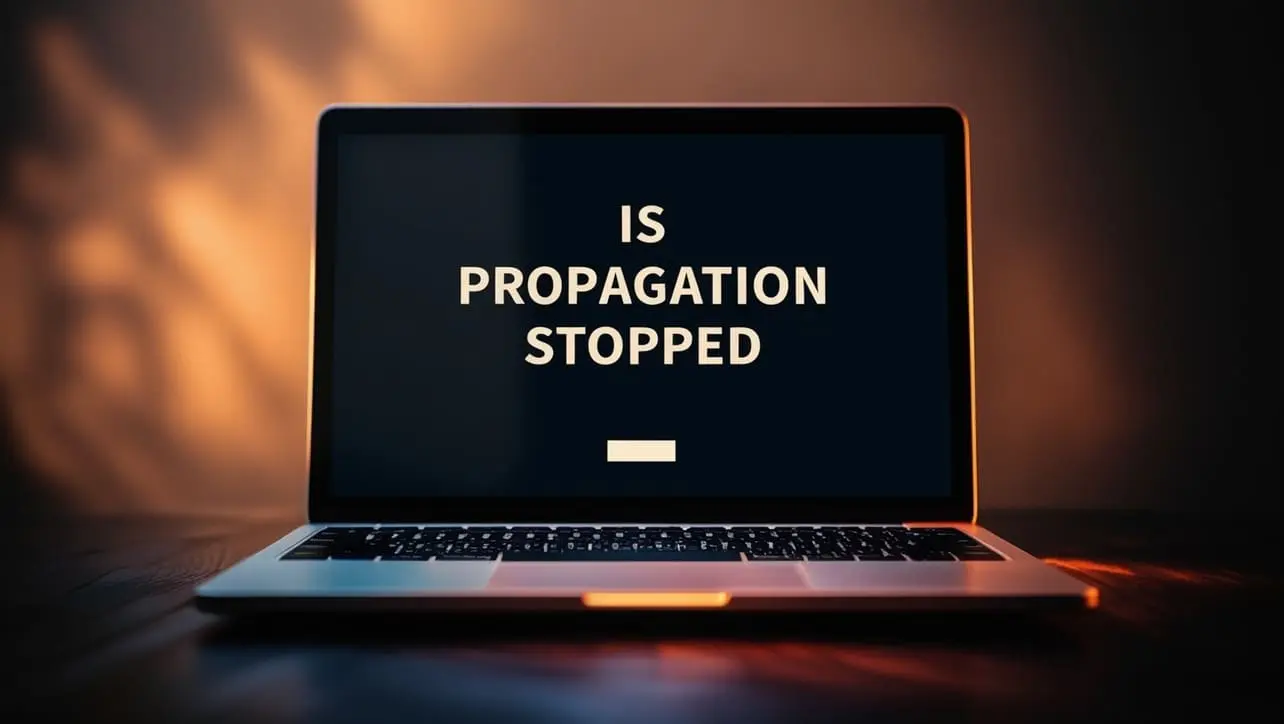
jQuery Topics
- jQuery Introduction
- jQuery Callbacks
- jQuery deferred
- jQuery selectors
- jQuery Ajax Events
- jQuery Ajax Methods
- jQuery Keyboard Events
- jQuery Keyboard Methods
- jQuery Form Events
- jQuery Form Methods
- jQuery Mouse Events
- jQuery Mouse Methods
- jQuery Event Properties
- jQuery Event Methods
- jQuery HTML
- jQuery CSS
- jQuery Fading
- jQuery Traversing
- jQuery Utilities
- jQuery Properties
jQuery event.isPropagationStopped()

Photo Credit to CodeToFun
🙋 Introduction
jQuery offers a variety of methods to handle and control events, enhancing the interactivity and responsiveness of web applications. One such method is event.isPropagationStopped(), which helps in determining whether the event propagation has been stopped.
This guide will explain the usage of the event.isPropagationStopped() method, supported by practical examples to demonstrate its functionality.
🧠 Understanding event.isPropagationStopped() Method
The event.isPropagationStopped() method in jQuery is used to check whether the stopPropagation() method was called on the event object. When stopPropagation() is invoked, it prevents the event from bubbling up the DOM tree, meaning that the event will not trigger handlers on parent elements.
💡 Syntax
The syntax for the event.isPropagationStopped() method is straightforward:
event.isPropagationStopped()Return Value:
- true: if stopPropagation() was called on the event object.
- false: otherwise.
📝 Example
Basic Usage:
Let's start with a simple example to see how
event.isPropagationStopped()works. Consider the following HTML structure:index.htmlCopied<div id="parent"> <button id="child">Click me</button> </div>And the following jQuery code:
example.jsCopied$("#child").click(function(event) { event.stopPropagation(); console.log("Child clicked. Propagation stopped: " + event.isPropagationStopped()); }); $("#parent").click(function() { console.log("Parent clicked."); });When you click the button with the ID child, the console will log:
OutputCopiedChild clicked. Propagation stopped: trueAnd the parent element's click handler will not be executed, as propagation is stopped.
Checking Propagation in Nested Handlers:
In more complex scenarios, you might have multiple event handlers and need to check if propagation was stopped at a certain point:
index.htmlCopied<div id="outer"> <div id="inner"> <button id="button">Click me</button> </div> </div>example.jsCopied$("#button").click(function(event) { event.stopPropagation(); console.log("Button clicked. Propagation stopped: " + event.isPropagationStopped()); }); $("#inner").click(function(event) { console.log("Inner div clicked. Propagation stopped: " + event.isPropagationStopped()); }); $("#outer").click(function(event) { console.log("Outer div clicked. Propagation stopped: " + event.isPropagationStopped()); });When you click the button, the console will log:
OutputCopiedButton clicked. Propagation stopped: true Inner div clicked. Propagation stopped: true Outer div clicked. Propagation stopped: trueHowever, only the button's click handler will actually execute because propagation stops immediately after event.stopPropagation() is called.
Conditional Propagation Stopping:
You can conditionally stop propagation based on certain criteria. This allows you to control event flow dynamically:
example.jsCopied$("#button").click(function(event) { if (someCondition) { event.stopPropagation(); } console.log("Button clicked. Propagation stopped: " + event.isPropagationStopped()); });Replace someCondition with any condition you need to evaluate.
🎉 Conclusion
The event.isPropagationStopped() method in jQuery is an essential tool for managing event propagation in your web applications. By understanding and effectively using this method, you can create more controlled and predictable event-driven behavior in your projects.
Whether you're working with nested event handlers or simply want to prevent events from bubbling up the DOM tree, event.isPropagationStopped() provides a straightforward solution to check if propagation has been stopped.
👨💻 Join our Community:
Author

For over eight years, I worked as a full-stack web developer. Now, I have chosen my profession as a full-time blogger at codetofun.com.
Buy me a coffee to make codetofun.com free for everyone.
Buy me a Coffee












If you have any doubts regarding this article (jQuery event.isPropagationStopped()), please comment here. I will help you immediately.